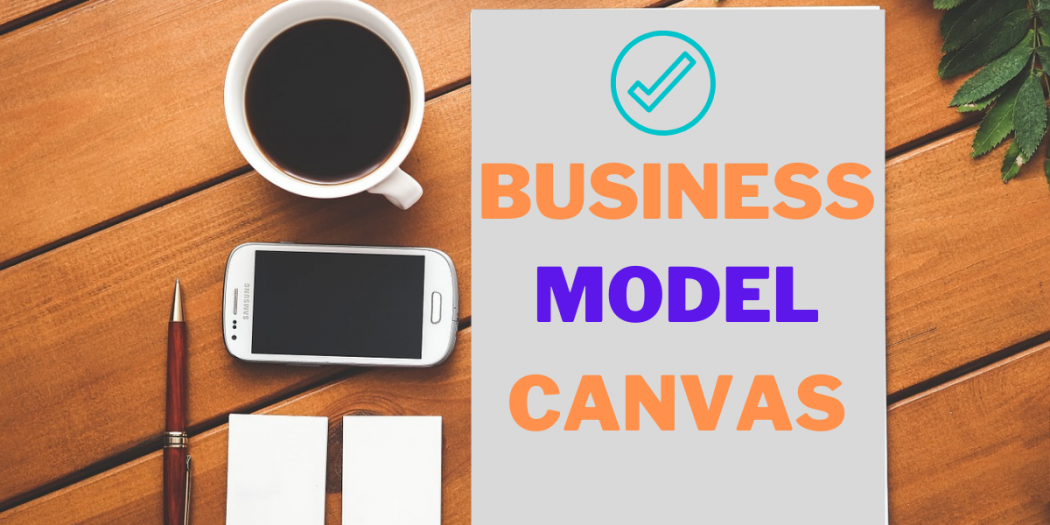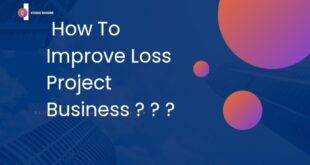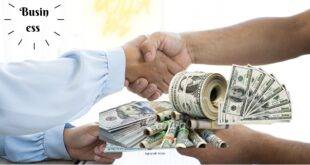The Business Model Canvas 2021
The Art and Science of Commerce
If we make a list of some of the most iconic brands that exist today and chart their journey, we will see that most of them, if not all had a sine curve journey before crossing the threshold of sure success. The journey from the garage or apartment they started in, to the skyscraper building piercing the skyline was filled with ups and downs. Among many of the reasons for this was the lack of a singular plan that was tried and established as one for success.
Cut to the third decade of the 21st century and people have become smarter and more resourceful even at the beginning of their journey from venture to a multinational corporation. The Internet has given people access to treasures that were unthinkable even a few years ago. A person sitting at his home can now find out exactly what another person thousands of miles away wants, create it and send it with a guarantee of satisfaction. Four people at four corners of the world can come together and form a partnership without ever having met them in person. One can now use the wisdom of one hundred to create something at one goes by knowing how to avoid making the one thousand mistakes of those before him. Has there ever been a better time to be alive?
It is important to note a not-so-quiet shift in the focus of businesses, large and small. The product is no longer the focal point, the customer is. More specifically, it is the demand and acceptability of a product by people that is of greater concern to businesses. This means that often, businesses would create that demand artificially; giving people something “they never knew they needed.” This could even refer to a new revolutionary way of providing an already in-demand product to the consumers, simply by packaging and presenting it differently.
A good example would be, say Uber or Airbnb. They took an age-old concept, i.e., of common people renting out their cars or homes for a few days to earn the extra buck, and gave it a commercially viable twist. This would not have been possible without a foolproof business plan in place, that had researched the market and prospects well, knew where its resources would come from, and had affirmed its viability and scalability.
It is with this very goal in mind that business plans are created. They are meant to provide answers to the WH word questions for the business –
WHat, WHere, WHy, WHen, WHo and HoW.
Anyone who has ever been part of any business venture or expansion will know a business plan by the thick wad of pages that the boss slams on the table in front of you before the meeting. You feel a lot of feelings, dread and despair being the ones fighting for prominence. You can already feel the dull ache your wrist will get from furiously turning the pages to connect the dots between the different aspects laid out.
Benjamin Franklin, inspired by Confucius’ aphorism, had wisely said, “Tell me and I forget, teach me and I may remember, involve me and I learn.”
Perhaps from this very nugget of wisdom and from the necessity of simplifying a complex process arose the idea for the Business Model Canvas. Many of us know how the storyboard, born in the Hyperion studio of Walt Disney, completely turned around the process of creating a new story for a movie and is used by every movie maker today. Consider the business model canvas to be the storyboard for a business. Or the crazy wall used by detectives, without any of the “crazy” in it. And it will give you an idea of what the function of a business model canvas might be.
So what is the Business Model Canvas?
The idea for a visual tool to aid in strategic management and planning for the establishment of a start-up or branching of an old business to a new field was conceived back in 2004 by business model innovator Alexander Osterwalder as part of his PhD dissertation “The Business Model Ontology: A Proposition in A Design Science Approach.” In spite of publishing his model online through Slideshare and Blogspot, he wanted to make his innovation more easily accessible to everyone. So, using crowdfunding, he published a business model canvas book along with his professor, information systems scientist Yves Pigneur on how to apply the business model canvas template for creating a game-changing business plan. It is called “Business Model Generation: A Handbook For Visionaries, Game Changers, And Challengers”. The book explains the 101 of the model, how to use it, business model designs and strategies along with numerous business model canvas examples.
There had been numerous business planning tools before the business model canvas came about, but what makes it unique is its visual and compact nature. In a one-on-one with Bill Fischer, Osterwalder had explained how he wanted business architects to be able to use the same facilities that actual architects use, i.e., having the whole blueprint of the plan on a single board for quick and easy visualization and evaluation. The model works so well because it puts every element of planning for a business on one page, which makes it much easier to make the necessary connections and draw the correct conclusions. If you use an interactive platform, physical or virtual, you can actively involve all key decision-makers in the planning process. They can contribute their ideas and these can be incorporated in real-time. Moreover, you can also use the model to keep track of the ideas formulated from the results of the validated learning process in a lean start-up approach. No wonder businesses from the grassroots level to the sky-high level are quickly adopting the canvas.
Business Model Canvas Explained
The working theory of the business model canvas is that it takes every aspect of building a new business or improving and expanding an old one, and divides it into nine fundamental subheadings. These are represented as blocks in the business model canvas template. Each block is cleverly placed to make associations with each other more organic. If you look at the business model canvas sample below, you will see that the placement of the blocks follows a trend.


The right side deals with everything to do with the customers, including the revenue received as a result of them converting to your business. The left side deals with the businessmen themselves and their activities and expenditures. The two sides are tied in by the value proposition block in the middle, which can be thought of as the result of the left side and the cause of the right.
The 9 business model canvas blocks are explained below:
-
Value Proposition –It defines the value you will be providing to the market. This does not simply imply the product or service you are going to deliver. It indicates the additional value you are adding to the market.
Thus, if you are a garment designer, it is not the clothes that will be your value proposition, since there are already enough clothes in the market. It is the innovation in the design or utility of your clothes that will be your value proposition. In simple words, the unique factor that will pull the customers in your niché is your value proposition.
-
Customer Segments – This refers to the market niché you will be catering to. It breaks up the potential consumer base for your product into various segments based on different lifestyle and requirements to help you focus on the largest segment or segments and design the product accordingly.
-
Channels – Every company has to decide which channel or channels they are going to get their product to the customers. The process starts right from marketing and lead generation to sale and customer support afterwards.
-
Customer Relationships –Every company needs to maintain a continuous relationship with its customers and prospective. This is important to stay in their minds and prevent them from churning. The method of such association throughout the journey of the customer with the company must be chosen carefully to make purchasing the offered product easiest by that method.
-
Key Resources – This lays down the primary resources a company needs to use to bring their value proposition to the market. This can be physical resources, human resources as well as infrastructure.
-
Key activities – This block lists the main activities for the company to make implement its business model and make its value proposition a reality. This section will deal only with activities that specifically impact the value proposition.
Bringing back the old example, if our garment designer can produce his new design simply by delegating some of his old artisans to the job, he will only include setting up a supply chain and providing fresh space as his key activities, and not getting new staff.
-
Key Partners – No business can stand alone. It needs suppliers, distributors, investors, and often other businesses to fill a gap they cannot. These relationships are mentioned in this part.
-
Revenue Streams – Every company, before starting out, must specify beforehand the channels through which they expect the returns to come in. If the revenue streams are known, expenditures, activities and every other part can be aligned accordingly.
-
Cost Structure – The cost structure spells out the expected expenditures and investments that the company needs to make to run the business.


|
Offerig |
Customers |
Infrastructure |
Finances |
How to Use the Business Model Canvas
You can use the business model canvas online or offline. For a basic, no-frills platform to use the business model canvas template, Word or Google Docs can be used. As you work on the financial section at the bottom of the business model canvas template, Excel or Google Sheets can be used to keep an eye on the costs and expenditures, and estimate the viability of the venture. You can also create a business model canvas presentation to use in a meeting. However, if you plan to involve your employees and managers in the planning, the business model canvas ppt must be used in the editing mode rather than the slide show mode. Once you have finalized your business plan in the business model canvas pdf version of the model can be created and printed out for use. Many a business model canvas app also exists to automate the process of creation, modification and evaluation of the business model canvas 2021.
The most popular of these are:
-
Strategyzer –For the ultimate social business model canvas experience, Strategyzer is the app to use which is natural, since it was co-created by Osterwalder himself. You can not only use the business model canvas but also the Strategyzer value proposition canvas alongside to correlate the value propositions, the customer segments and the relationships between the two, around which the whole plan revolves. Salient features include real-time collaboration, a revenue stream estimator for viability judgement and a Lean Startup processor.
You will have the option of unlimited canvases per subscription, comments and notes for clarity and color coding for better visibility. Not only that, but you also have portability features for your business model canvas. Excel can be connected to the app to receive the numbers, while business model canvas ppt can be created directly on Powerpoint by simple export of the canvas. Besides these, 256-bit encryption, high-grade SSL/TLS and PCI DSS compliance ensure full security of your data. You can download Osterwalder business model canvas from the Strategyzer website at a nominal amount of $25 a month.
-
Canvanizer – This is a free tool with a more user-friendly interface. In other words, Canvanizer is directed more towards young entrepreneurs without any financial backup, people who are testing out the model for the first time and those more comfortable with a low-feature UI.
A good and simple Canvanizer example is the one for a new beer that you can view by following this link: https://canvanizer.com/canvas/H9nRqxd2boI.
Besides these, there are several other sites and apps that you can use for to create your business plan. All you have to do is search for it on your web browser and choose the one that you feel best suits your needs.
What are the Steps to Create a Good Business Plan on the Business Model Canvas?
The business model canvas was created with the glue of the different aspects, i.e., the value proposition, at the center. Thus, it is not meant to be filled from left to write. There is a specific approach to deal with each block in relation to the other, which you can view in the graphic chart in Osterwalder’s blog What is a Business Model. When followed, it gives maximum flexibility and flow in creating the business plan. In this business model canvas article, we will discuss each of these steps in that very order, with some liberties offered here and there.
-
Value Proposition – This finds a central position in the canvas because it is the most important part of any business around which every other part revolves. If a business cannot provide any value to the market, the market will simply write it off as useless and redundant.
The points you need to add here are:
-
The value you are adding
-
What makes it unique
-
What does it provide that no current alternative does
-
What problem does it solve or what facility does it provide
-
Why would someone want this value in their life
-
Does it make someone’s life easier
-
Customer Segments – Some people, especially those with established businesses looking to break into a new niché, start with this block. You will have to first decide if your product caters to the mass market or the niché market. Now you will have to divide your potential customer base into segments based on various characteristics like age, gender, education, profession, income, etc.
You will then have to choose the primary segments your product will serve and correlate the needs, desires, problems and habits of each segment to the value you are giving them. The best way to do this is by creating personas for each segment. These are hypothetical customers with imaginary bio-data, to whom you will impart the attributes that will make them suitable candidates for your product. Using personas will help you to get into the minds of your customers and deduce what they would like.
-
Channels –When choosing channels for every customer segment, you will not only have to make sure that channel is easily accessible and convenient to the segment, but also that it, or a combination of channels, will consistently stay with the customer through his AIDAS journey.
An effective channel is a mark of successful marketing. The five phases in channels are:
-
Awareness
-
Evaluation
-
Purchase
-
Delivery
-
After-sales
The channels should not only take into consideration the customer’s preferences but also be efficient and economical to the entrepreneur himself.
-
Customer Relationships –Customer relationships are established when the business interacts with its customers. You can do this in person, digitally, via telecommunication or through a third party. It will depend greatly on the business structure.
Besides the traditional methods of establishing and maintaining customer relationships, some of the newer ones are:
-
Personal assistance
-
Dedicated personal assistance
-
Self-service
-
Automated service
-
Communities
-
Co-creation
Customer relationships must be maintained throughout the AIDAS process. This is to ensure customer conversion and retention and prevent churning.
-
Key Resources – The key resources any business needs are of four types. They are:
-
Physical
-
Intellectual
-
Human
-
Financial
Depending on whether your business is product-driven, scope-driven or infrastructure-driven, the ratio in which you will be needing these resources will vary widely.
When choosing your resources, you will need to keep in mind certain factors like availability, cost-effectiveness, quality, quantity, categories, etc. It is especially important that you choose your financial resources carefully because ownership rights will be involved here. There are also some tricky avenues to navigate in the intellectual department, as intellectual piracy is a serious issue, whether you are the victim or the perpetrator.
-
Key activities –The key activities of a business refers to the activities that the business performs to convert its resources into their value proposition.
All key activities will be directed towards the accomplishment of one of the following steps:
-
Production
-
Problem-solving
-
Platform
Production obviously refers to the making and marketing of the product. Problem-solving encapsulates any steps taken to improve the product and remove flaws in it, while also trying to make all other processes easier and more economical without compromising on quality or safety.
Platform is the interface representing the product and allowing customers to view or interact with it. Other than these, subsidiary activities like networking and financial activities can be given their own section or clubbed under other sections.
-
Key Partners – Partnerships are an indispensable necessity in an economy as complex as the present one. Different industries are associated with the production of different resources that many different industries need. The most common form of partnership is that between a buyer and a seller.
Other partnerships include joint ventures, alliances and coalitions. The biggest driving force for a partnership is the question “What do I need that I cannot produce myself but someone else can?” Partnerships do have the risk of the repercussions of the partners falling out, but it comes with quite a few advantages, like:
-
Optimization and economy –When two or more companies partner up to produce a product, each providing that component that they are experts in, not only is the production process optimized and superior product quality ensured, but the production cost is also greatly driven down. This reduces the market value of their product, thus attracting more takers of the product.
-
Reduction of risk and uncertainty –When partners handle the business for a product, they will be appealing to both their customer bases, thus increasing the chances of success of the product. Even in case the product tanks, the losses will be shared. Partnerships have always been a convenient way to not mitigate risks using shared knowledge and resources. Not only that but sometimes, competitors also partner with each other to reduce competition and exploit each others’ customer base.
-
Acquisition of particular resources and activities –This refers to both buyer-seller relationships and partnerships where one company provides an essential service or resource to another for their product. A good example would be when a wedding planning business partners with an interior designer, photography and videography company or a florist for dedicated services.
-
Revenue Streams – Business model canvas users can take up this part either after the customer sections or in the second-last step. Revenue will include both fixed and dynamic parts. Some revenues can be fixed for one business but variable for another. Common revenue streams are product sale, usage and subscription fees, lending, renting or leasing fees, brokerage fees, licensing fees, advertising and asset sale.
-
Cost Structure –Cost structure is nothing but the expenditure incurred by your business. Costs arise from obtaining your key resources, performing your key activities and infrastructure costs. Like revenue, costs can also be fixed and variable. The average cost of your business will depend on whether it is a cost-driven business or a value-driven one. Economies of scale and economies of scope are the two other factors that one must consider when filling up this block.
It makes sense that when you are working on each block, you will have to use the points in the other blocks as reference. For example, the value proposition and customer segments will be connected thoroughly through channels and customer relationships. Similarly, key resources and key activities will have references to each other, punctuated by key partners and ultimately leading to value propositions.
Revenue will connect to the right side components and cost structure to the right. There may also be connections between revenue and cost to indicate the cost of a resource which will bring in a certain revenue. Costs that connect to no key resource or activity, channels that do not bring in sufficient revenue, value propositions that do not cater to any customer segment, resources not connected to either an activity or a partner are some examples of points that would need reassessment if found on a business model canvas 2021.
Business Model Canvas Advantages
If you ask anybody why Smart classrooms flourished over traditional ones, the answers you get will be the same as if you ask why the business model canvas is more convenient than other business planning techniques. But let us discuss them anyway.
-
Flexibility and portability – As a business planning medium, business model canvas gives users huge flexibility to plan, test and modify. Whether you use an online model or offline, all you have to do is insert, delete, move and connect to modify your business plan and align it to your vision.
The same applies to portability. You can create presentations, documents or worksheets easily and directly from the canvas, online or offline.
-
Visibility and focus – The fact that every component of the business plan is on the same page, with direct, visible connections between them, makes it much easier to focus and work on each part.
Discrepancies are spotted easily, ideas flow more freely and no one loses any focus trying to connect the dots.
-
Single visual medium –This is perhaps the one point where the business model canvas is most similar to our Smart classroom analogy. Using the canvas allows everyone to understand the business plan from an intuitive layout on a single medium. Compare that to each individual reading from their own copy of the plan and you know their attention is bound to wander.
-
Scope for involvement – What if, in the meeting, it is decided that a certain factor is not feasible and needs to be modified. This means you have to not only change that point but also everything connected to the point. Doing that in a document on paper or computer seems tedious and messy enough to be postponed or left as a comment on the side. But with the business model canvas, it hardly sounds like a hassle.
-
Clever layout – The business model canvas places each block in such a manner that the most important part, the value proposition is in the middle, and every other part is placed around it, grouping similar blocks together. This radial layout makes forming connections far easier than a plan that follows a linear pattern.
Practical Examples
People tend to believe real-life examples more than the long lines of a lecture. As evidence to support the above assertions, given below are links to two business model canvas examples pdf.
http://www.macrothink.org/journal/index.php/bms/article/download/10193/8364
These research theses have two business models explained using the traditional method as well as the business model canvas. In both business canvas model examples, restaurant businesses were chosen as our model business. A Canvanizer example in the same vein would be this: https://canvanizer.com/canvas/0ccXBgd2XDs. A more mainstream example, using a well-recognized brand is also given below:


The fact that businesses of all status and stature are adopting the business model canvas is the best testimony to its success.
One major reason for this would be the applicability of the model on all kinds and sizes of businesses. An entrepreneur with a start-up wanting to make it big can use the model, just as established businesses wanting to expand or re-evaluate their market stance can. Application is not the only victory of the business model canvas. University curricula are also including it as a major lesson in business planning. Some may argue that the business model canvas leaves out some very important factors that can sway businesses, especially external factors. But the canvas was not created for that.
You already have other tools like SWOT analysis to do that for you. It was not meant to give you an omniscient vision or omnipotent control over your business. As Osterwalder himself clarifies in his talk with Fischer, the business model canvas is not an invention. It is nothing new – there have been numerous other models before his. His was only an innovation – he took what his predecessors had done and gave it an improved, ergonomic face. But that innovation is so genius that the whole world is reaping the benefits.
 Best Business Ideas Open up your business to new possibilities.
Best Business Ideas Open up your business to new possibilities.








